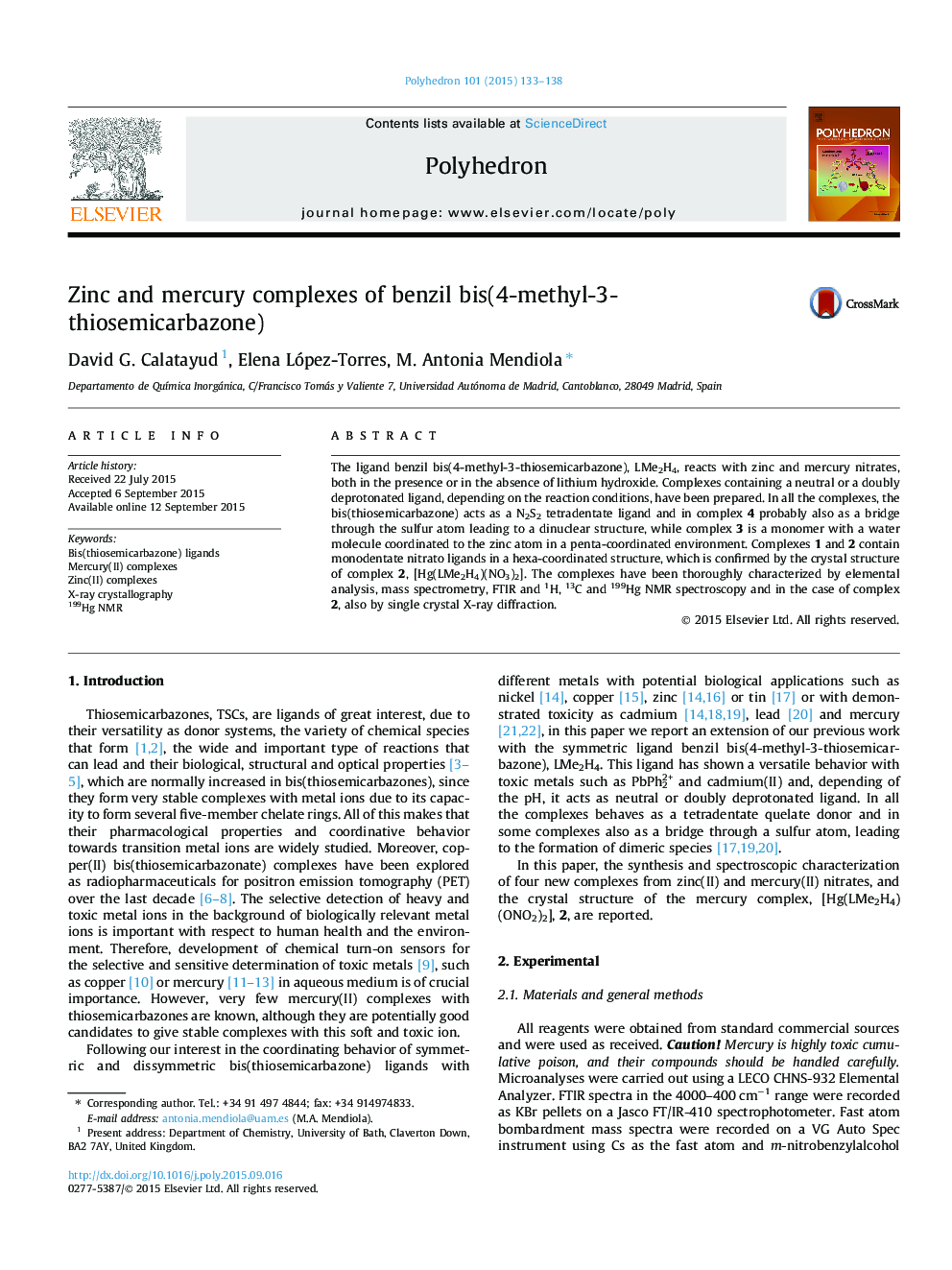| Article ID | Journal | Published Year | Pages | File Type |
|---|---|---|---|---|
| 1336825 | Polyhedron | 2015 | 6 Pages |
The ligand benzil bis(4-methyl-3-thiosemicarbazone), LMe2H4, reacts with zinc and mercury nitrates, both in the presence or in the absence of lithium hydroxide. Complexes containing a neutral or a doubly deprotonated ligand, depending on the reaction conditions, have been prepared. In all the complexes, the bis(thiosemicarbazone) acts as a N2S2 tetradentate ligand and in complex 4 probably also as a bridge through the sulfur atom leading to a dinuclear structure, while complex 3 is a monomer with a water molecule coordinated to the zinc atom in a penta-coordinated environment. Complexes 1 and 2 contain monodentate nitrato ligands in a hexa-coordinated structure, which is confirmed by the crystal structure of complex 2, [Hg(LMe2H4)(NO3)2]. The complexes have been thoroughly characterized by elemental analysis, mass spectrometry, FTIR and 1H, 13C and 199Hg NMR spectroscopy and in the case of complex 2, also by single crystal X-ray diffraction.
Graphical abstractBenzil bis(4-methyl-3-thiosemicarbazone) reacts with zinc and mercury nitrates, both in the absence or in the presence of LiOH·H2O, to yield complexes with the ligand acting as a neutral or doubly deprotonated donor, with variable structures. The complexes are thoroughly characterized, including 199Hg NMR and single crystal X-ray diffraction.Figure optionsDownload full-size imageDownload as PowerPoint slide
